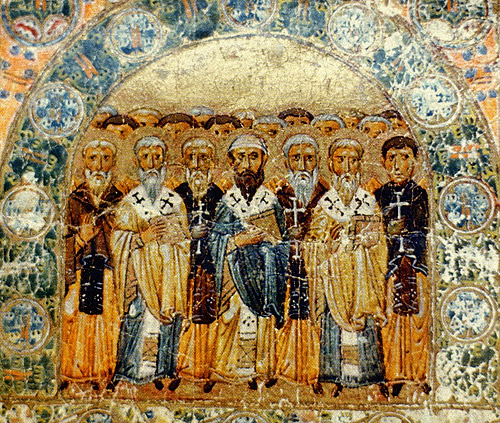
Here is part 2 of an essay from Gary Deddo on the nature of the church and its ministry. For other parts of the essay, click a number: 1, 2, 3, 4, 5, 6, 7, 8, 9, 10, 11, 12. We encourage you to add your thoughts and questions in the “comments” box at the end of each post to get a discussion going. To read the full essay in booklet form, click here. To read the related essay, “Clarifying Our Theological Vision,” click here.
A Brief Theology of the Church
(with a view to equipping the saints for the work of ministry)
by Dr. Gary Deddo
Part 2: Images of the Church
Last time, we noted that the church’s ministry is determined by its identity. We then began to explore that identity, asking “What is the nature of the church?” This time we’ll go deeper, looking at four primary ways the church is identified in biblical revelation.
1. Body of Christ
The church (ekklesia in Greek, meaning those called or assembled together) is most often and with greatest weight and stress identified as the Body of Christ. [1] By way of analogy to the human body with its head, this image tells us that there could be no closer created relationship than that between Jesus Christ and those who belong to him. The connection is vital—it is essential to its life. The body belongs to and has existence and direction by the head to which it is entirely joined. The body is the body of the head. You identify the body by the head to which it essentially belongs. The body does not exist or live apart from the head.
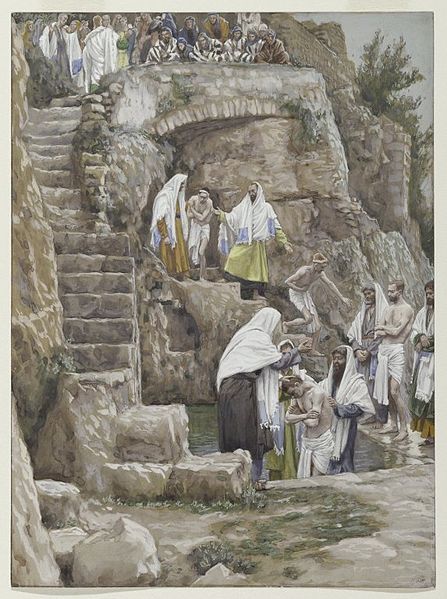
(public domain via Wikimedia Commons)
Though closely joined, the Head is not to be confused or interchanged with the Body. The Head is the source, the life, the sustenance, the authority of the Body. The Body depends upon the Head while the Head does not depend upon the Body. [2] The church belongs to Jesus in a way that exceeds the connection of human heads to human bodies. As the Body of Jesus Christ, the church belongs indivisibly to him. It has no existence, no life apart from him. Further implications of this connection between Christ and his Body are laid out in the New Testament. We’ll explore those later.
2. Cornerstone and foundation
The second image Paul offers is less organic but still pithy, pointed and in certain ways, a more comprehensive description of the relationship between Christ and his church/his Body. Making use of an analogy from the engineering of a physical temple, Paul identifies Jesus as the cornerstone of a temple of worship built in his honor. In using this analogy, Paul was drawing on an ancient practice, giving it a unique meaning that is defined by Jesus, not by the myths and temples of pagans.
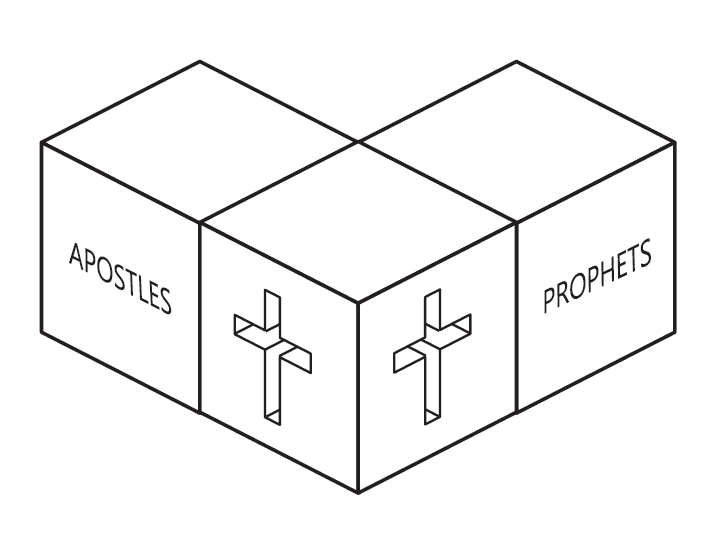
This image of a cornerstone conveys the idea of the absolute beginning of a structure. Laying the cornerstone is the first step of construction, especially in building a temple. It provides the building’s meaning, its structural form and integrity. Physically, the cornerstone gave alignment to the structure’s length, width and height. All other elements of the temple were set in reference to this stone, thus finding their proper meaning and place in reference to it.
In pagan temples the cornerstone often had an inscription declaring which god the temple was dedicated to—that is, whose temple it was. In ancient myths, known in the days of the early church, the image of a cornerstone was sometimes used metaphorically to refer to the beginning point of all of creation set up by the gods.
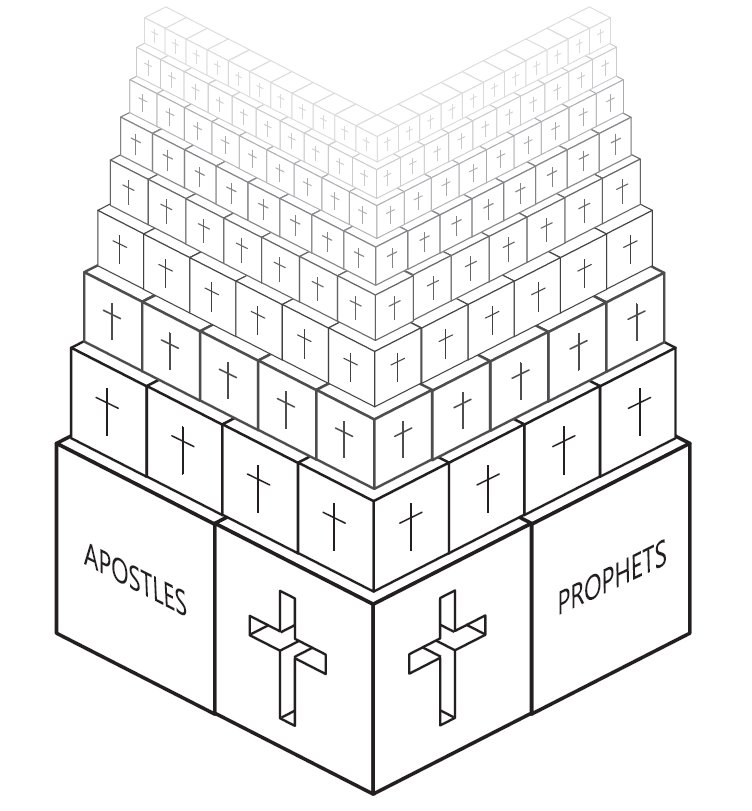
By referring to Christ as the cornerstone of the church, Paul is emphasizing the following points:
- That the very existence of the church is dependent upon him.
- That the church and its worship belong to him, are dedicated to him.
- That all that the church is and does must be arranged, ordered and structured in reference to him as the source, norm and standard of its life.
Peter makes use of the same image in his first letter. He wants to make sure his readers don’t get the wrong idea and think of Christ in impersonal, inert ways as a literal cornerstone might suggest. So he qualifies his use of the image:
As you come to him, the living Stone—rejected by humans but chosen by God and precious to him—you also, like living stones, are being built into a spiritual house to be a holy priesthood, offering spiritual sacrifices acceptable to God through Jesus Christ. (1 Pet. 2:4-5)
Peter wants to make sure we see the resurrected Jesus Christ, who is eternally alive, as the cornerstone. Jesus is active, speaking, communicating and nourishing those joined to him as members of his body, as those who worship God in and through him. And we then, are also made alive. We are living stones built on him to offer our lives daily as an act of worship to God. Jesus is thus a life-giving cornerstone, not a dead block of marble. He is the Living Word of God to us.
The center of the center
To compare this to another image we often use, a cornerstone is to a building what the center point of a circle is to the circle’s circumference. It’s another way of saying Jesus is the Center of the center. Jesus being the center of the church means that he is the key to its whole meaning, structure and functioning. Everything else orbits around him and is oriented to him so that all its movements in all its parts are related to and measured and guided by staying centered on who he is and on his purposes for his church called together by him and gathered around him.
Cornerstone with a foundation of the apostles and prophets, the written Word of God
Paul brings in another element here before he talks about the church as a whole. He tells us that what is first oriented and already made to be in alignment with the cornerstone are certain foundation stones. The cornerstone first provides a reference to other foundation stones upon which the rest of the church is built. Together with the foundation stones, the cornerstone provides a foundation for the whole building. As the image is laid out by Paul, those foundation stones that are first directed and oriented to Jesus, the cornerstone, are the prophets and the apostles.
The prophets were persons appointed by God before Jesus Christ was incarnate to bear spoken and written testimony to God and prepare the people of God to ultimately identify and properly respond in faith to the incarnate Son. The apostles were persons appointed by God during and after Jesus’ earthly ministry to point back to Jesus Christ incarnate and his completed work of salvation and point forward to his return and the consummation of his rule and reign, his coming kingdom. Together, the writings of the prophets and apostles are what we call Scripture—the Old Testament and the New Testament. These persons and their messages, ordered and directed by Jesus Christ, the Living Word, point to him, providing, with him as the cornerstone, the complete foundation for anything and everything built upon it as his church.
So the foundation of the church is Scripture in service to Jesus Christ himself the eternal Word of God, who authorized both the prophets and apostles to be normative witnesses to him. We can summarize this by saying that the written Word of God serves as the revelation of God that is appointed to direct and order the life and worship of the church to Jesus Christ, who is the Living Word of God.
None of this revelation with Christ at the Center would be possible without the ministry of the Holy Spirit both before and after the incarnation of the eternal Son of God. The gracious ministry of the Holy Spirit is essential if those apostles and prophets were to hear and faithfully receive the Word of God. And we would not be able to hear or faithfully receive from Scripture were it not for the gracious work of the Holy Spirit made possible by the completed work of Jesus Christ. So God’s normative communication to us is an achievement of the whole Trinity, each person serving together with a distinct aspect of gracious ministry to us that we might know the Triune God and be reconciled to him so that we live in fellowship and communion with God.
The written Word of God is authorized by and gains its authority from the cornerstone, the Living Word of God. The Living Word of God is the living source of the written Word of God. As the Living Cornerstone, Jesus Christ himself continues even now to serve as its interpretive center. The written Word is to be interpreted in a way that points to Jesus Christ as its normative and living Center. The Living Word himself is the continuing source of the written Word. The Living Word continues to speak to us normatively or authoritatively in and through his written Word. The Living Word is not to be thought of as standing at a deistic distance from the written Word, as if the risen Lord Jesus had become mute. The Triune God remains the speaking, communicating and eloquent God who speaks in and through his written Word. And we hear it best when we listen to it with Jesus Christ as its living, speaking Cornerstone, as if it is his Word, as if that written Word belongs to him. Here are some key passages that contribute to this insight:
Consequently, you are no longer foreigners and strangers, but fellow citizens with God’s people and also members of his household, built on the foundation of the apostles and prophets, with Christ Jesus himself as the chief cornerstone. In him the whole building is joined together and rises to become a holy temple in the Lord. And in him you too are being built together to become a dwelling in which God lives by his Spirit. (Eph. 2:19-22)
As you come to him, the living Stone—rejected by humans but chosen by God and precious to him—you also, like living stones, are being built into a spiritual house to be a holy priesthood, offering spiritual sacrifices acceptable to God through Jesus Christ. (1 Pet. 2:4-5)
When the Advocate comes, whom I will send to you from the Father—the Spirit of truth who goes out from the Father—he will testify about me. (John 15:26)
Brothers and sisters, the Scripture had to be fulfilled in which the Holy Spirit spoke long ago through David concerning Judas, who served as guide for those who arrested Jesus. (Acts 1:16)
The Father who sent me has himself testified concerning me. You have never heard his voice nor seen his form, nor does his word dwell in you, for you do not believe the one he sent. You study the Scriptures diligently because you think that in them you have eternal life. These are the very Scriptures that testify about me, yet you refuse to come to me to have life. (John 5:37-40)
[Jesus] said to them, “How foolish you are, and how slow to believe all that the prophets have spoken! Did not the Messiah have to suffer these things and then enter his glory?” And beginning with Moses and all the Prophets, he explained to them what was said in all the Scriptures concerning himself…. He said to them, “This is what I told you while I was still with you: Everything must be fulfilled that is written about me in the Law of Moses, the Prophets and the Psalms.” (Luke 24:25-27; 44-45)
3. Groom with bride
The third image that supplements our understanding of the relationship between Jesus and the church, his body, is one of groom with bride. This image points out a very personal, deep, life-long, intimate and fruitful relationship. Here are a few key scriptures that use this image:
The bride belongs to the bridegroom. The friend who attends the bridegroom waits and listens for him, and is full of joy when he hears the bridegroom’s voice. That joy is mine, and it is now complete. (John 3:29)
Let us rejoice and be glad and give him glory! For the wedding of the Lamb has come, and his bride has made herself ready. (Rev. 19:7)
The Spirit and the bride say, “Come!” And let the one who hears say, “Come!” Let the one who is thirsty come; and let the one who wishes take the free gift of the water of life. (Rev. 22:17)
After all, no one ever hated their own body, but they feed and care for their body, just as Christ does the church—for we are members of his body. “For this reason a man will leave his father and mother and be united to his wife, and the two will become one flesh.” This is a profound mystery—but I am talking about Christ and the church. (Eph. 5:29-32)
This image indicates a very close, even intimate and personal relationship of Jesus with his church. It also conveys a dynamic, interactive, interpersonal element of relationship. Given other such relational imagery throughout the New Testament, it conveys the idea of a history of relationship that develops and grows, especially from being unmarried, to being betrothed to having the marriage consummated. In the Old Testament there is preparation for this dimension of understanding with God’s relationship with Israel being compared to the relationship of a husband and wife. This is poignantly portrayed in Hosea where Israel’s unbelief and betrayal are compared to adultery. There are also several references in Isaiah and Jeremiah to the people of God as God’s bride. [3]
Again, this image should not be taken alone. It helps us fill out a portrait when put together with the other images. This image, along with the others, are all together illustrative of a deep and complex reality that can’t be reduced to any one word or image. The images synthesize other more literal teaching about God’s relating to his people and what we are told about the history of that relationship culminating in the metaphorical image of the marriage feast of the Lamb depicted in Revelation 19:7-9.
4. Sharing-sacrament in body and blood
A fourth image used in several passages and alluded to in yet others, involves the idea of being related to Jesus Christ by way of the image of ingestion. Our fellowship and communion with Christ is like our taking him into our bodies as our food, as sustenance for our life. We display this image when we celebrate the Lord’s Supper. As we take bread and wine, we are said to be taking and eating his body broken for us, and his blood poured out for us. This image conveys the idea of not only ingestion, but also, as interpreted by Jesus, of his giving up his life for us and establishing a renewed covenant relationship with him, the new covenant in his blood. So we can refer to this image as being sacramental, partaking of his body and blood. We are receiving a share in his resurrected and ascended life in renewed relationship with God. That’s how closely Christ is related to us and how dependent we are on him, more than even physical food.
Communion in his body and blood by way of the sign of ingestion points to a very close connection that provides sustenance (nourishment). This image suggests other New Testament images of life-giving relationship, including those between the vine and branches, and the flow of water giving life to persons, plants and animals in a parched land. Recall also how Jesus identifies himself as the Bread of Life and Living Water. The taking of another into our bodies conveys the idea of indwelling, or internalizing him. Such deep connection in the New Testament is often related to the presence and ministry of the Holy Spirit within us, working in our hearts, minds and spirits, and upon our human nature.
Here are two references to those images:
Very truly I tell you, unless you eat the flesh of the Son of Man and drink his blood, you have no life in you. Whoever eats my flesh and drinks my blood has eternal life, and I will raise them up at the last day. For my flesh is real food and my blood is real drink. Whoever eats my flesh and drinks my blood remains in me, and I in them. (John 6:53-56)
Is not the cup of thanksgiving for which we give thanks a participation [koinonia=partaking, sharing, having communion] in the blood of Christ? And is not the bread that we break a participation [koinonia] in the body of Christ? (1 Corinthians 10:16)
What do we learn from these images?
In their own way, each one of these four images points to the reality of a deep relationship between Christ and his church (a relationship that involves worshiping the Father and receiving the Spirit). Many other passages speak in more literal ways concerning this relationship, using words such as follow, receive, serve, obey, learn, hope, love, trust, faith, and belief. Though these words are important and quite helpful, the spiritual depth, meaning and wholeness of the relationship we enjoy with Christ are perhaps best captured and synthesized by the images we’ve just explored. Next time we’ll look further at the implications.
______________________
[1] Romans 7:4; 1 Corinthians 6:15; 10:16; 12:12; 12:22; 12:23; 12:27; Ephesians 1:23; 2:19; 3:6; 4:12; 4:25; 5:30; Colossians 1:24; 1 Timothy 6:2; Galatians 1:2.
[2] The strict analogy with a human body breaks down here since the created human head cannot live long apart from its body. As is true in every case, you cannot work backwards from the logic of a creaturely analogy to doctrinal statements about God, who is not a creature. Knowing Jesus is Lord and the eternal Son of God blocks the misuse of this image to make it seem there is a kind of mutual dependence of the Head upon the Body. The teaching and image used is meant to tell us far more about the Body than about the Head.
[3] Isaiah 49:18; 61:10; 62:5; Jeremiah 2:2; 2:32; 7:34; 16:9; 25:10; 33:11; Joel 2:16.


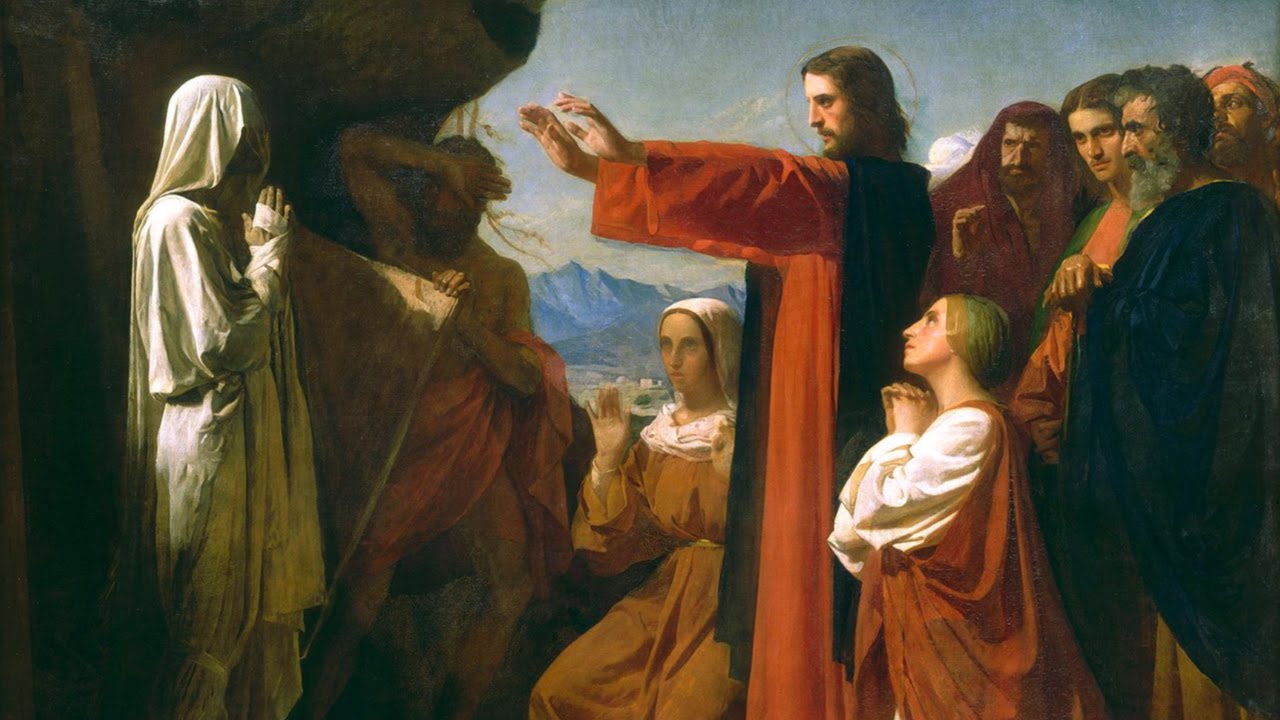

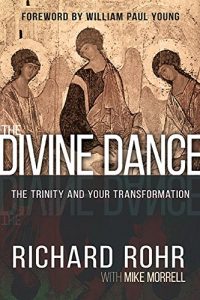
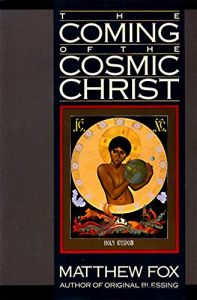
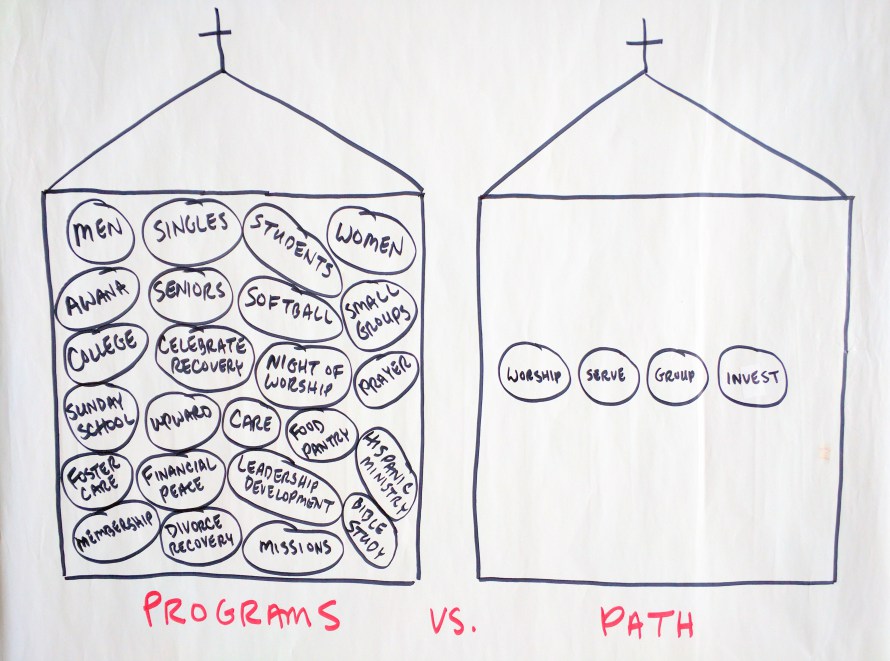
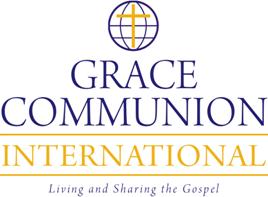 The doctrinal renewal that has transformed (and continues to transform) GCI from top to bottom, focused initially on the most fundamental or central truths of biblical revelation regarding who God is as revealed in Jesus Christ according to Scripture. The Spirit focused our hearts and minds on the person and work of Jesus who reveals the true nature, character, heart, mind and purpose of God. In Jesus, God made himself known in person, in time and space, in flesh and blood. As a denomination, GCI was arrested, then re-centered by that self-revelation of God, which focused our faith, hope, love and worship of God through him.
The doctrinal renewal that has transformed (and continues to transform) GCI from top to bottom, focused initially on the most fundamental or central truths of biblical revelation regarding who God is as revealed in Jesus Christ according to Scripture. The Spirit focused our hearts and minds on the person and work of Jesus who reveals the true nature, character, heart, mind and purpose of God. In Jesus, God made himself known in person, in time and space, in flesh and blood. As a denomination, GCI was arrested, then re-centered by that self-revelation of God, which focused our faith, hope, love and worship of God through him.
